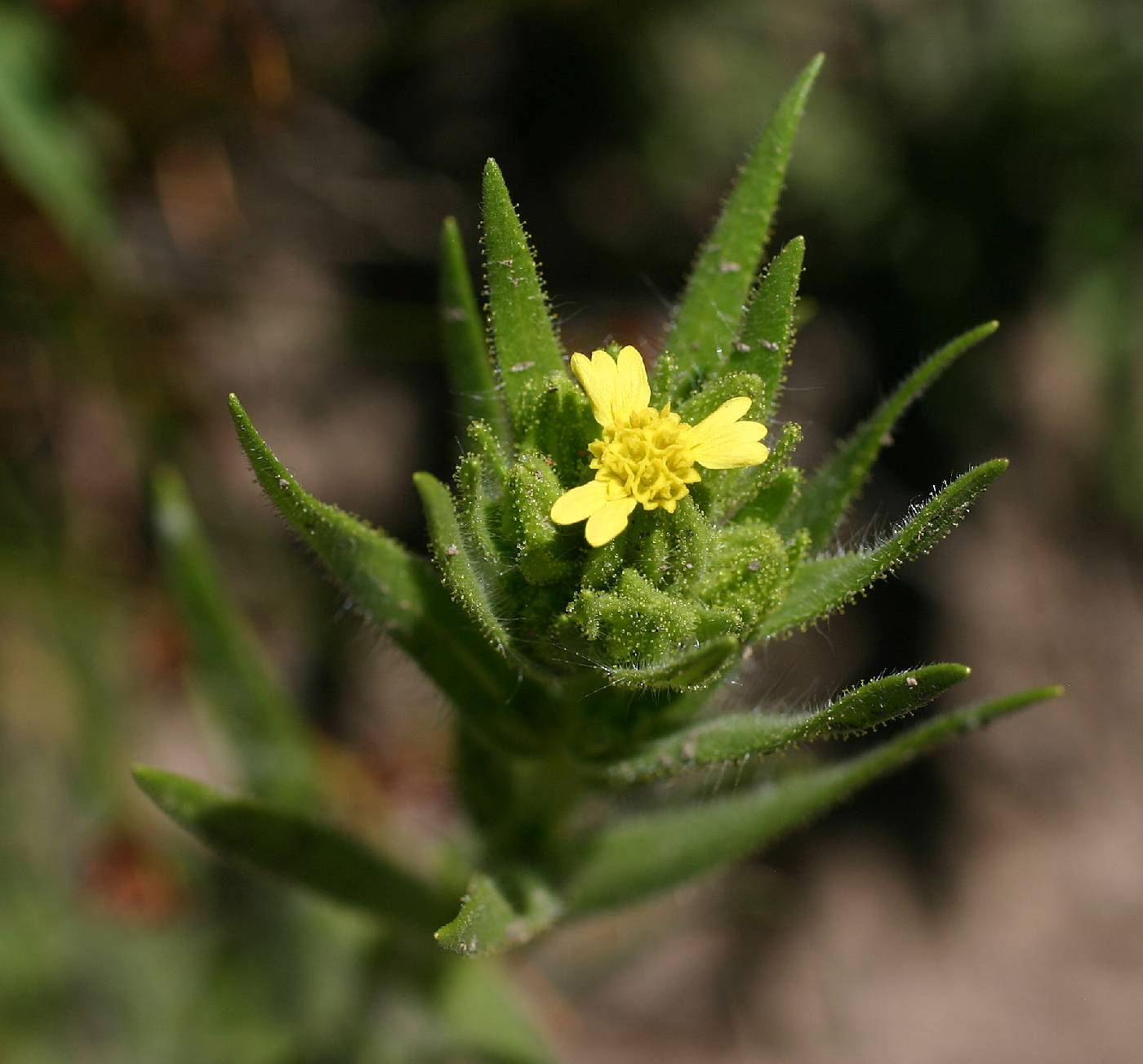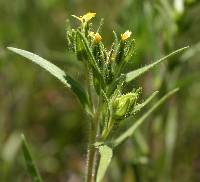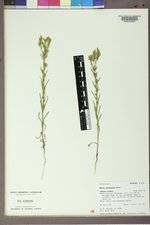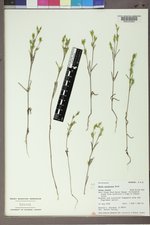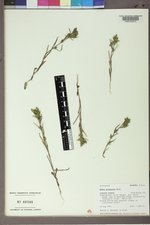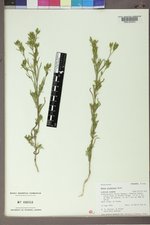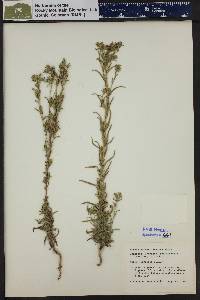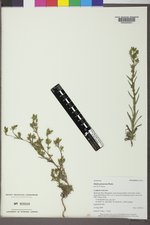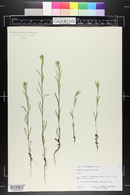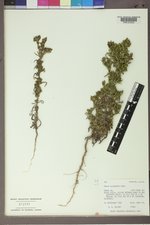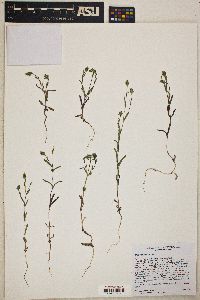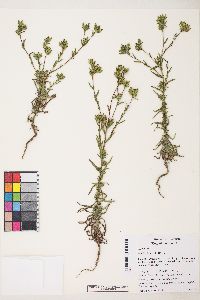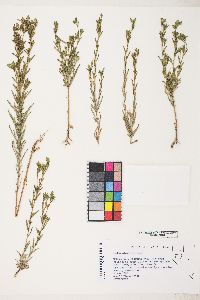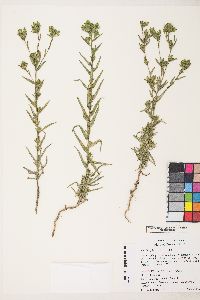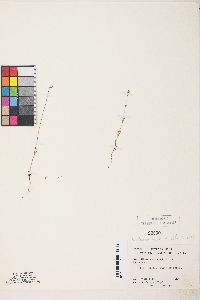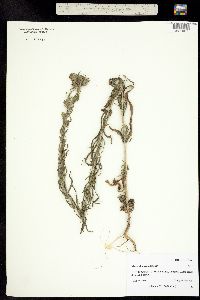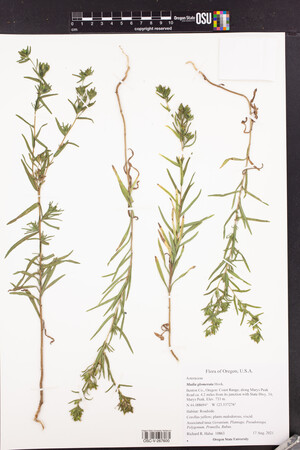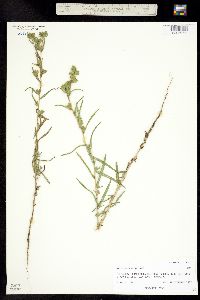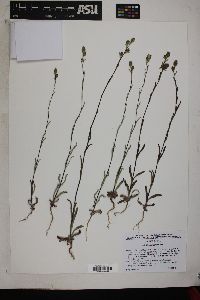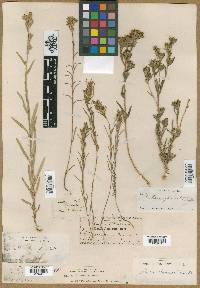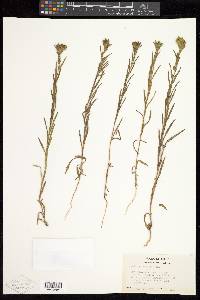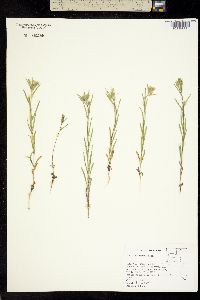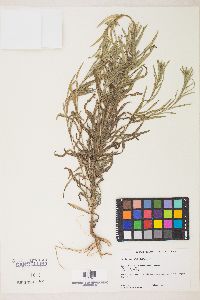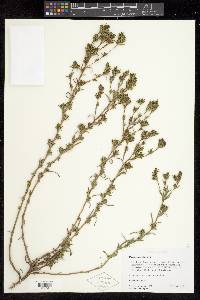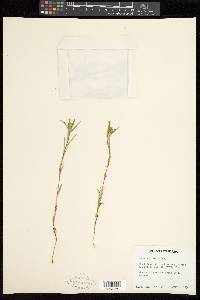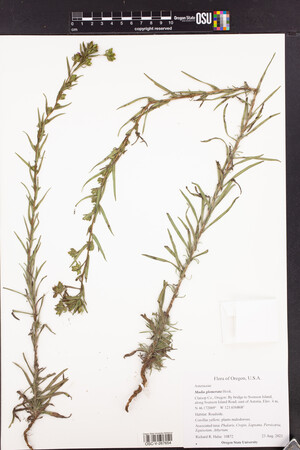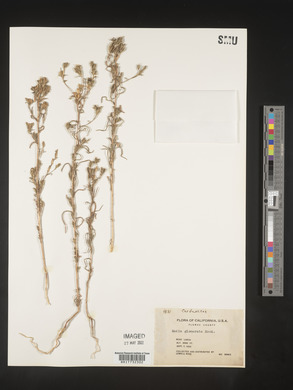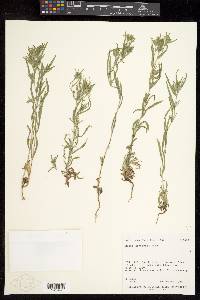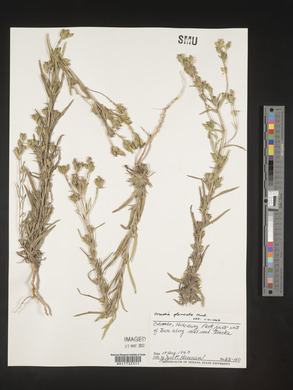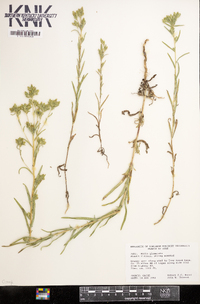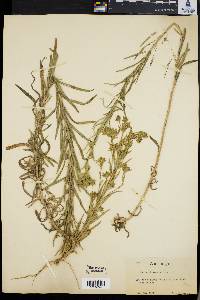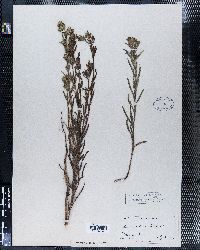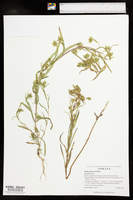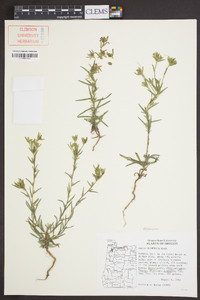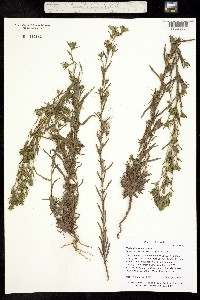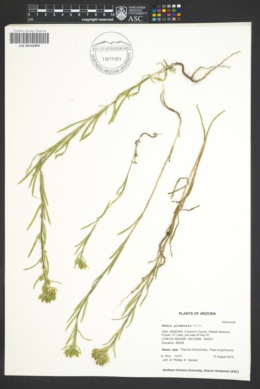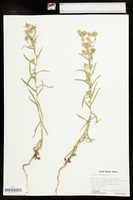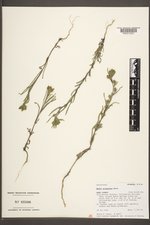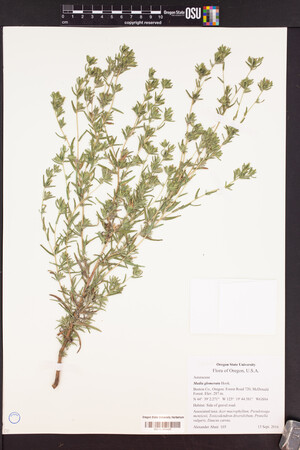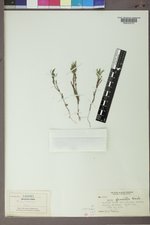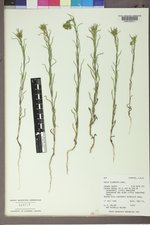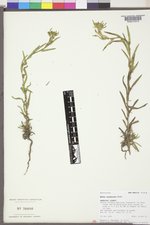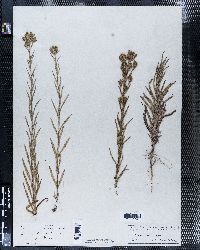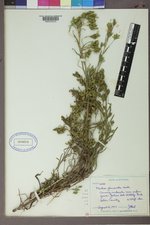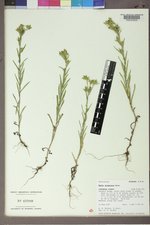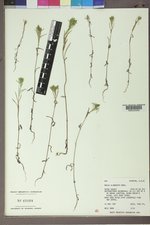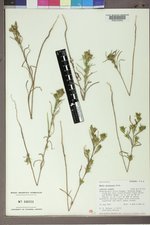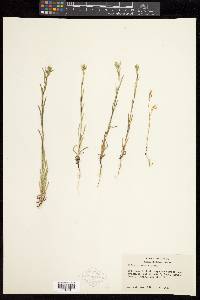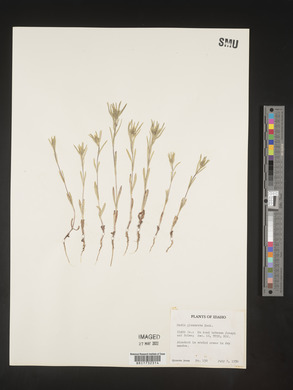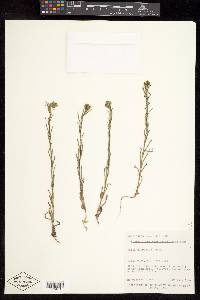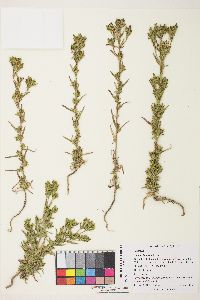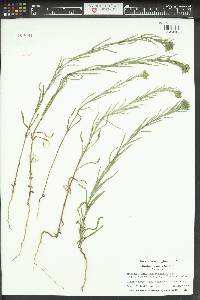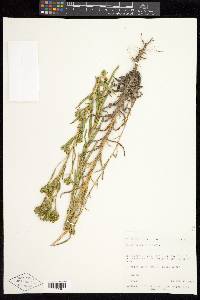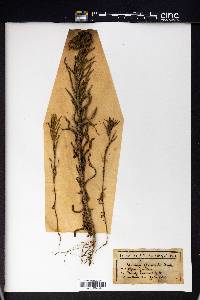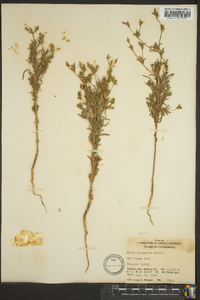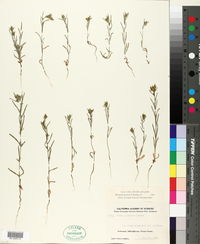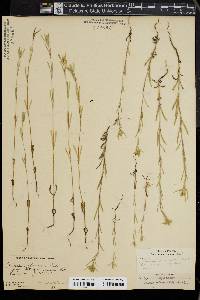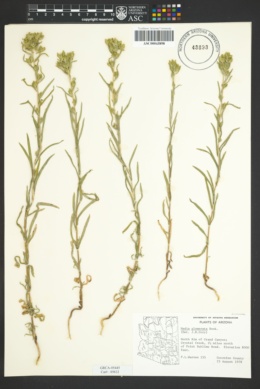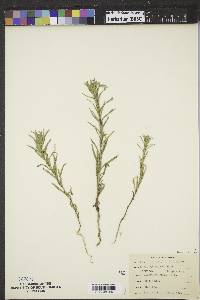Madia glomerata
|
|
|
|
Family: Asteraceae
Mountain Tarplant, more...mountain tarweed, cluster tarweed
[Amida gracilis, moreAmida hirsuta] |
Plants 5-120 cm, self-compatible (heads not showy). Stems prox-imally villous to hispid, gland-ular-pubescent distally, glands yellowish or black, lateral branches sometimes surpassing main stems. Leaf blades linear to lance-linear, 2-10 cm × 2-7 mm. Heads usually in crowded glomerules, sometimes in corymbiform or paniculiform arrays. Involucres narrowly ovoid or ellipsoid, 5.5-9 mm. Phyllaries ± pilose and glandular-pubescent, glands yellowish or black, apices erect or reflexed, ± flat. Paleae mostly persistent, distinct. Ray florets 0 or 1-3; corollas greenish yellow to purplish, laminae 1-3 mm. Disc florets 1-5(-12), bisexual, fertile; corollas 3-4.5 mm, pubescent; anthers ± dark purple. Ray cypselae black, dull, compressed, beakless. Disc cypselae similar. 2n = 28. Flowering Jun-Sep. Openings in grasslands, meadows, swales, shrublands, woodlands, forests, edges of marshes, lakes, or watercourses, disturbed sites, often in coarse, sandy or gravelly soils; 0-3100 m; Alta., B.C., Man., Ont., Que., Sask., Yukon; Alaska, Ariz., Calif., Colo., Conn., Idaho, Iowa, Maine, Mich., Minn., Mont., Nev., N.Dak., N.Mex., Oreg., S.Dak., Utah, Vt., Wash., Wyo. Madia glomerata has the most extensive North American distribution of any species in Madiinae. At southern latitudes, M. glomerata occurs mostly in montane settings. Occurrences in eastern North America are mostly local and widely scattered.
General: Annual, mostly 10-80 cm tall, strongly tar scented; stems simple or branched above, branches often taller than the main stem, very leafy, villous to hispid below, glandular-pubescent above with stalked yellowish glands. Leaves: Mostly cauline, typically ascending, often with clusters of axillary growth, opposite near the base, alternate above, linear to lance-linear, 2-7 cm long, 1-5 mm wide, strigose to hirsute, the uppermost glandular as well, margins entire to slightly toothed; blades sessile. Flowers: Heads solitary to several, arranged in a corymb; involucre hemispheric, 6-11 mm long, 10-18 mm wide; phyllaries numerous, in 3-6 series, faintly to strongly glandular, sometimes puberulent, the bases whitish, the apex green, spreading to reflexed; ray flowers mostly 12- 40, 8-20 mm long, purple or blue; disk flowers 40-160, 4- 7 mm long, yellow; flowers June-October. Fruits: Achene, 4-6 mm long, oblanceolate, compressed, black, glabrous; pappus none. Ecology: Dry, open places, often along roadsides; 2200-2450 m (7200-8000 ft); found in our area only in Coconino County on the North Rim of the Grand Canyon and near Mormon Lake southeast of Flagstaff, and in the Lukachukai Mountains in Apache County; western and Notes: na Editor: Springer et al. 2008 More slender than no. 1 [Madia sativa Molina], 1-5 dm, with shorter, generally more appressed pubescence, scarcely or not at all glandular below the infl; lvs linear or lance-linear, 2-7 cm נ1-4 mm; heads smaller and relatively narrower, 2-5 mm wide; rays mostly 1-2, or wanting from some heads, 2 mm; 2n=28. Open places; cordilleran region, occasionally intr. along our w. border. July-Sept. Gleason, Henry A. & Cronquist, Arthur J. 1991. Manual of vascular plants of northeastern United States and adjacent Canada. lxxv + 910 pp. ©The New York Botanical Garden. All rights reserved. Used by permission. |

